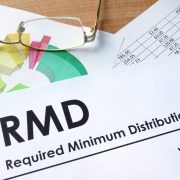With Tax Year 2013 In the Bag, Let’s Review Self-Directed IRA 2014 Contribution Limits
 April 15th has come and gone. Which means if you haven’t maxed out your allowable Self-Directed IRA contributions for 2013, it’s too late. But it’s not too late to take full advantage of the power of tax deferral or tax-free growth (for Roth accounts) for tax year 2014.
April 15th has come and gone. Which means if you haven’t maxed out your allowable Self-Directed IRA contributions for 2013, it’s too late. But it’s not too late to take full advantage of the power of tax deferral or tax-free growth (for Roth accounts) for tax year 2014.
Let’s take a moment to review what’s allowable this year:
2014 contribution limits for traditional IRAs are $5,500 for the year – actually, through next April 15th, provided you meet the income requirements. The income thresholds are tougher to meet if you are covered by a workplace retirement plan, however.
Catch-up contributions
If you are 50 or older, or you will turn 50 by the end of the calendar year, however, you’re eligible to throw in another $1,000 in catch-up contributions. So that means your limit for 2014 is $6,500.
The same limits apply to the Roth IRA, though the income limitations are much more generous: Single taxpayers can make a full contribution up to an adjusted gross income of $114,000, and the allowable contribution phases out at $129,000.
If you’re married and file jointly, you can make the full $5,500 contribution (plus allowable catch-up contributions) up to an AGI of $181,000, after which time your allowable contribution phases out gradually until it reaches zero at $191,000 for the year.
Rollovers from other qualified tax-deferred retirement plans, such as 401(k) plans, are unlimited for the traditional IRA. Some limitations may apply to rollovers from tax-deferred plans to Roth IRAs, since the income you realize counts against you when it comes to the adjusted gross income contribution phaseouts.
SEPs or Simplified Employee Pension Plans
While most of the press you read refers to Self-Directed IRAs, remember that you can also establish a Self-Directed SEP IRA. These have all the advantages of a self-directed traditional IRA, with the additional advantage of a much higher contribution limit.
For 2014, your allowable maximum dollar allocation to a SEP IRA, whether it’s a Self-Directed SEP IRA otherwise, is $52,000. That’s a $1,000 increase over last year, so if you were making regular monthly contributions to max out your contribution, it’s time to increase those contributions. The maximum compensation limit, overall, is $260,000, which is a $5,000 increase from tax year 2013.
You have until April of 2015 to make contributions for tax year 2014 SEPs. If you filed for an extension, you can still make the contribution until the date the tax return is due.
Likewise, as of the date of publication, it is still not too late to make a SEP contribution for tax year 2013, either, if you filed for an extension and your return is not due yet.
Self-Directed SIMPLE IRAs
You can create a Self-Directed SIMPLE IRA, too, if you meet the requirements. This year’s contribution limits are unchanged from last year at $12,000. If you meet the age requirements for cat-up provisions, your allowable contribution is $14,500.
SIMPLE IRAs are tricky in that they have two separate contribution deadlines, so pay attention: The contribution deadline for employee contributions is year-end. The deadline for employer contributions is April 15th of 2015.
Self-Directed Solo 401(k)s
Self-Directed 401(k)s – usually Self-Directed Solo 401(k)s, or ‘one participant 401(k)s – are increasingly popular in our industry thanks to their relatively high contribution limits and tax advantages. You can contribute up to $17,500 to a solo 401(k) per year. Technically, this is a deferral of compensation. If you’re self-employed, you are deferring the realization of “earned income” by diverting some of what you earn to a 401(k). And you can actually defer everything – 100 percent of compensation – up to $17,500 per year for 2014. If you qualify for catch-up contributions, your limit goes up to $23,000.
On top of this, if you are your own employer, you can also to defer up to 25 percent of compensation under the ‘nonelective’ heading. Note that in calculating this amount, you have to deduct contributions for yourself from your overall compensation, as well as one half of your self-employment tax. For more information, see IRS Publication 560, Retirement Plans for Small Business
Better yet, give us a call at 1-866-7500-IRA(472) and we’ll walk you through the calculations, including whether you would be better off in a self-directed SEP IRA or a Solo 401(k) plan. We look forward to serving you.
Image by: presentermedia.com


